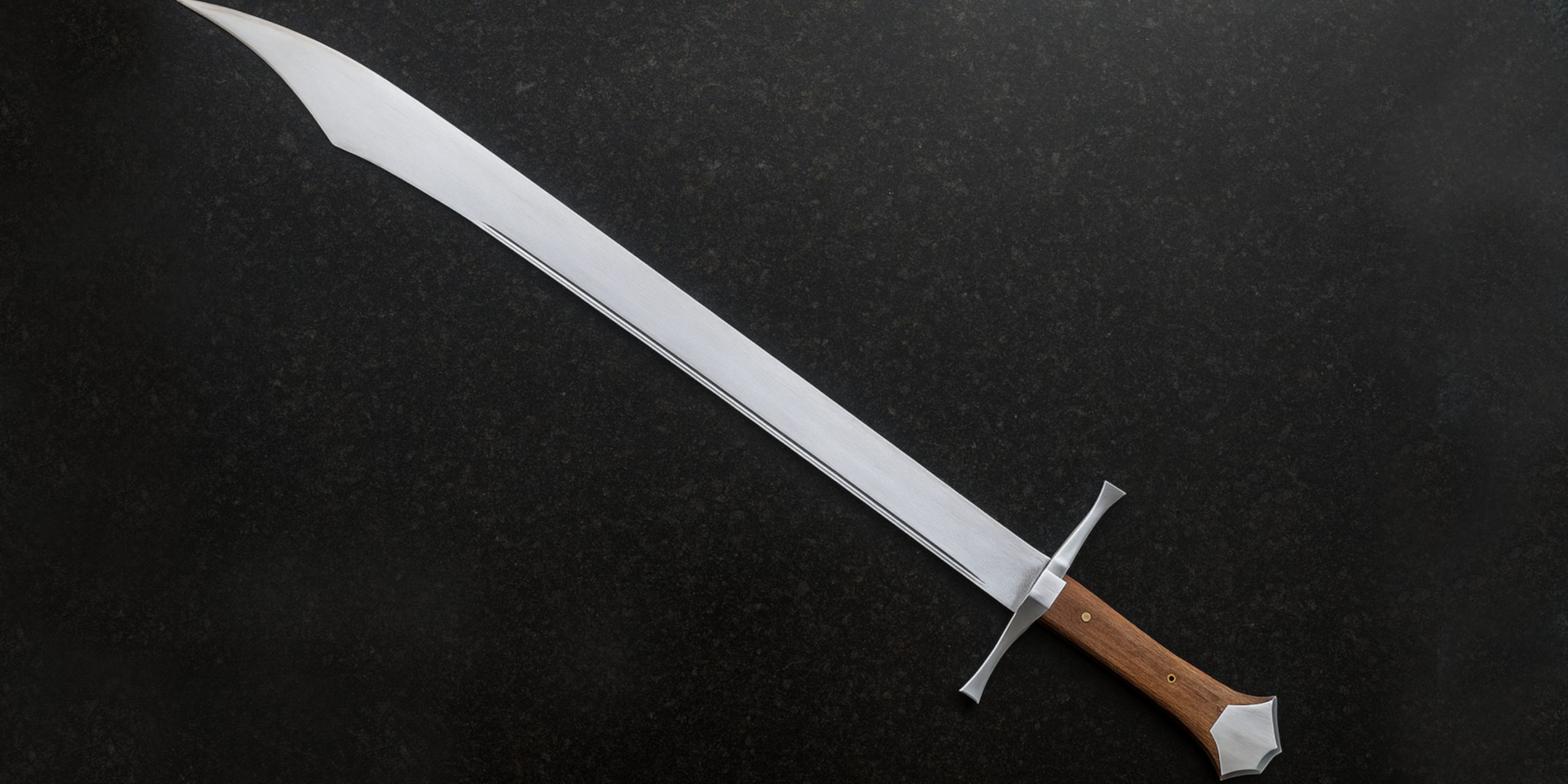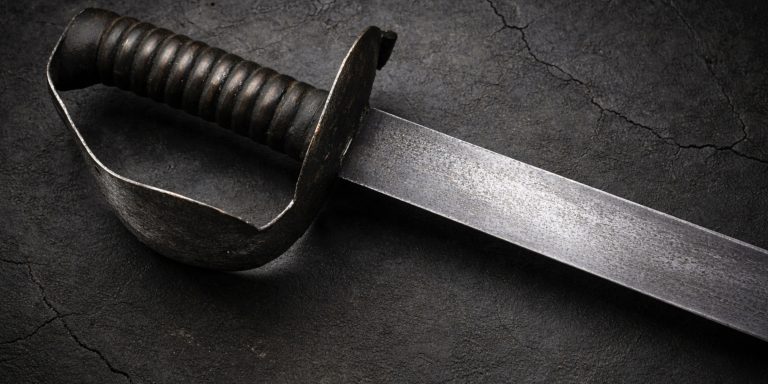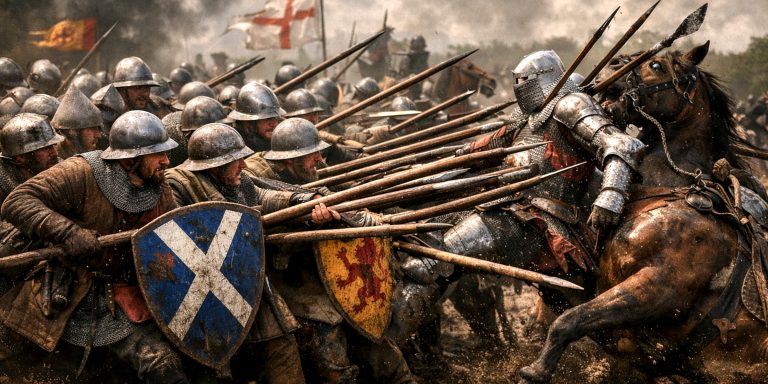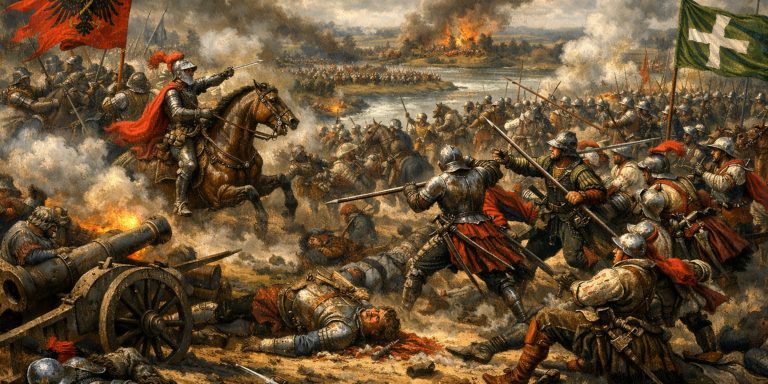
The Grosse Messer, or “great knife,” was a formidable single‑edged weapon used across late medieval Central Europe. Larger than civilian knives but distinct from noble swords, it became a practical and effective blade for both self‑defence and battlefield use. Though originally favoured by non‑nobles and mercenaries, it gained a unique place in martial history through its sheer versatility and legal accessibility.
Specifications
| Feature | Details |
|---|---|
| Total Length | 80 to 150 cm |
| Blade Length | 65 to 120 cm |
| Blade Width | 3 to 5 cm |
| Weight | 0.8 to 1.8 kg |
| Blade Type | Single-edged, straight or slightly curved |
| Construction | Full or slab tang with wooden grip scales |
| Guard | Simple crossguard, often with a protective Nagel |
| Pommel | Varied: hat-shaped, bird’s beak, or absent |
History and Evolution
The origins of the Grosse Messer lie in 14th‑century Germany and surrounding regions. Evolving from civilian knives like the Bauernwehr and Hauswehr, the Messer gradually increased in size and combat capability. By the 15th century, these blades were standard among Landsknechte (German mercenaries) and other foot soldiers.
Fencing masters like Johannes Lecküchner developed detailed treatises on their use, integrating Messer combat into the broader martial tradition of the Holy Roman Empire. Over time, even larger forms appeared, such as the Kriegsmesser, which required two hands and exceeded 1 metre in length.
By the late 16th century, the popularity of Messers declined with the rise of thrusting swords like the rapier and more formalised duelling weapons.
Advantages and Disadvantages
Advantages
- Legally classified as a knife: Often permitted where swords were not.
- Effective cutting power: Designed for powerful slashing and chopping.
- Versatile grip: Usable with one or two hands depending on size.
- Robust construction: Built for durability and field use.
- Lower cost: Cheaper to make than double-edged swords.
Disadvantages
- Limited thrusting ability: Poorer performance in thrusts compared to arming swords.
- Crude reputation: Associated with commoners, not knightly prestige.
- Forward-heavy balance: Can feel unwieldy in tight fencing exchanges.
- Minimal hand protection: Lacks complex guards or quillons of later swords.
Comparison with Similar Weapons
| Weapon | Edge Type | Typical Users | Key Differences |
|---|---|---|---|
| Grosse Messer | Single-edged | Mercenaries, civilians | Knife‑like tang, chopping focus |
| Arming Sword | Double-edged | Knights, men‑at‑arms | Better thrusting and status symbol |
| Falchion | Single-edged | Foot soldiers | Curved, more top-heavy |
| Longsword | Double-edged | Nobility, duelists | Longer reach, more balanced guard |
| Kriegsmesser | Single-edged | Infantry soldiers | Two-handed variant of the Grosse Messer |
Cultural Legacy
Though never held in the same regard as knightly swords, the Grosse Messer earned a lasting place in martial history. Its presence in historical fencing manuals, such as those of Lecküchner, shows that it was not a crude peasant tool, but a weapon requiring training and finesse. Today, it is studied in Historical European Martial Arts (HEMA) and collected as a distinctive example of late medieval practicality.
Where to See Grosse Messers
Original examples can be seen in European museum collections, particularly in Austria and Germany. Institutions such as the Kunsthistorisches Museum in Vienna and other regional museums often display surviving Messers or their larger cousins, the Kriegsmesser.
Many modern replicas are also available through historical reproduction smiths, who base designs on museum originals.
Collector’s Guide
What to Look For
- Authenticity: Originals are rare and usually housed in collections.
- Subtype: Civilian Messer, Grosse Messer, or Kriegsmesser.
- Condition: Corrosion and structural integrity affect value heavily.
- Materials: Steel quality, original wood or horn scales, intact Nagel.
- Documentation: Provenance and certification increase value.
Auction Prices
| Type | Auction Price (Approx.) |
|---|---|
| Kriegsmesser | £18,000 to £36,000 |
| Reproductions | £100 to £300 |
Note: Grosse Messers rarely appear in auctions as authentic pieces. When they do, they often fall under the Kriegsmesser or Messer category, depending on size and usage.
Legacy
The Grosse Messer is a bridge between utility and warfare, legality and lethality. It represents the martial needs of those outside the nobility, crafted with purpose rather than prestige. While its blade may have faded from battlefields, it lives on through modern study, fencing disciplines, and historical appreciation.



